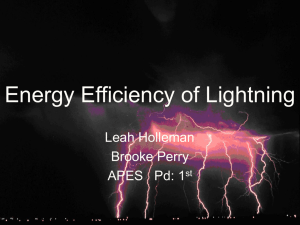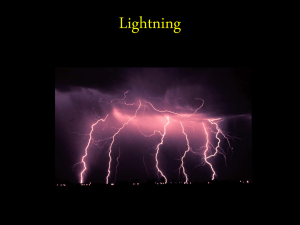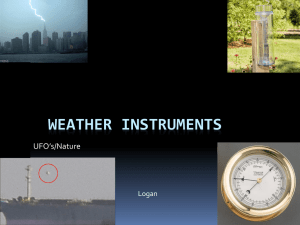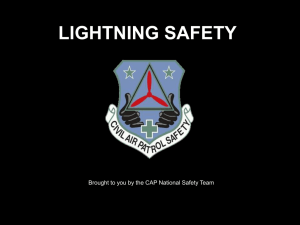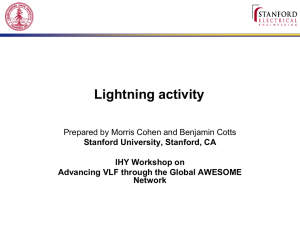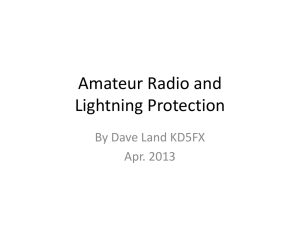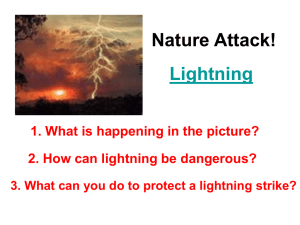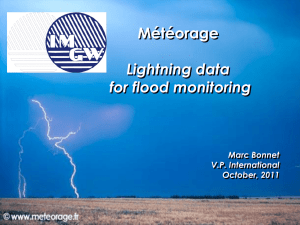Lightning - MBE-Baugh-10
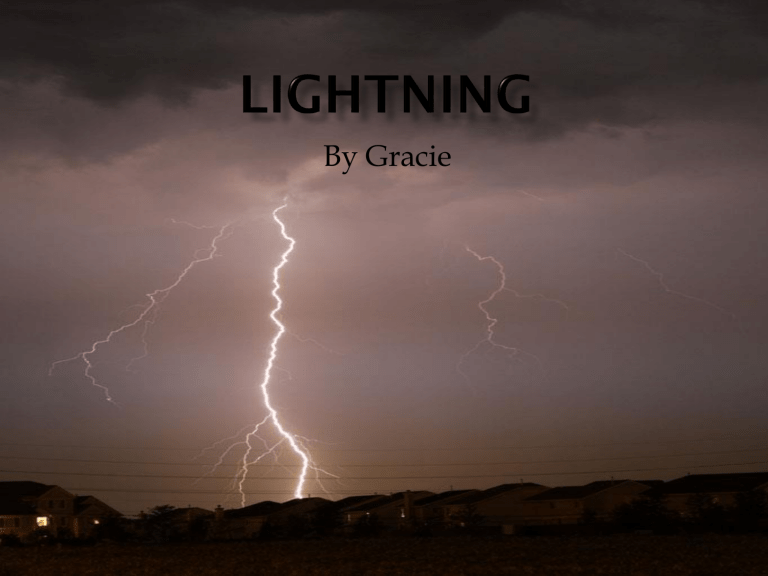
By Gracie
The top of a cloud has a positive electric charge, the bottom of a cloud has a negative electric charge. If the negative charged atoms become to crowded, they
“jump” to another part of the cloud, to another cloud , or to the ground.
This jump causes static electricity we call lightning!
Lightning strikes the earth about 6,002 times a minuet all around the world, so it is very likely that lightning is striking somewhere right now! The most struck place in the world is Central Africa!
Lightning strikes the earth constantly, so many people get hit by lightning. Every year an average of 300 people are struck by lightning in the U.S., but luckily only 10% of those 300 actually die!
Cloud-to-Ground-
Cloud –to-ground is the most unsafe and severe lighting strike known to man but not the most common!
In-Cloud-
In Cloud lightning is when lightning strikes in the cloud and never hits or harms anything on land!
Cloud-to-air
Cloud to air lightning is when the air around a positively charged cloud top reaches out to the negatively charged air around it which causes it to strike up in the air!
Your hair will stand on end
Your skin will tingle
Light metal objects will start to vibrate of buzz
Metallic taste in your mouth
Palms get sweaty
Smell of ozone
(swimming pool smell)
Fulgurite is natural, hollow glass tunnels formed in the sand by lightning. It can also be made in rock, but sand is the most common! When lightning hits the sand, it is so hot that it melts the sand particles together to form Fulgurite. The average diameter for Fulgurite is 1-2 inches, but can be up to 30 inches long!
Fulgurite is the Latin word for lightning!.
The energy from one flash of lightning flash could light a 100 watt lightning bulb for more than 3 months!
Credits
http://news.nationalgeographic.com/news/2004/06/062
3_040623_lightningfacts.html
http://www.stormwise.com/striking.htm
http://www.sky-fire.tv/index.cgi/lightning.html
http://en.wikipedia.org/wiki/Lightning http://www.mos.org/sln/toe/lightning.html
Picture Credits
http://www.thelensflare.com/large/lightning
_28148.jpg
http://www.schoolersinc.com/images/Pantano_fulgu rite_a.jpg
http://www.uwec.edu/jolhm/EH4/Lightning/Lightn ing/1.jpg
http://www.stormwise.com/striking.htm
http://markgorman.files.wordpress.com/2008/05/lig htning-bolt-poster.jpg
http://weblogs.wgntv.com/chicago-weather/tomskilling-blog/lightning%202%5B1%5D.jpg



